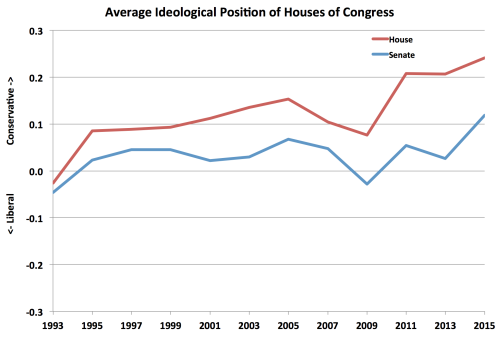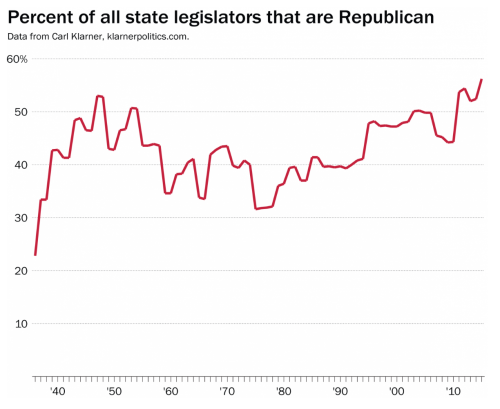Yes, I’ll Vote for HRC. No, I’m Not Happy About It.
By James Kwak
Now that Hillary Clinton has wrapped up the nomination, I have no problem with Clinton supporters saying that Sanders supporters should back her in the general election. I’m certainly voting for Clinton (not that my vote matters, since I live in Massachusetts), and every liberal Democrat I know who likes Sanders is going to do the same. (Yes, there are probably some Sanders voters who will vote for Trump or stay home, but they are largely anti-establishment independents who were always unlikely to vote for Clinton.)
Apparently that’s not enough for many in the Clinton camp, however, who insist that I should be happy that Hillary Clinton is the Democratic nominee, and that this is actually a good thing for progressives—defined loosely as people who want higher taxes on the rich, less inequality, stronger social insurance programs (including true universal health care), and better protections for workers. The argument is basically that Clinton is (a) more pragmatic, (b) more skilled at getting things done, and (c) more likely to be able to work with Republicans to achieve incremental good things, while Sanders would have simply flamed out in futility.
To which my first answer, which I’m sure I share with many other liberals is: Yes, I know how the Constitution works already. I know we have three branches of government, and that the Republicans control Congress.
And that’s exactly the point. We’ve had centrist Democratic presidents for sixteen out of the past twenty-four years. It turns out that having a pragmatic Democrat in the White House is good for some things, like maintaining four “liberals” on the Supreme Court, preserving the right to an abortion, and slowing down Republican plans to cut taxes on the rich. (Since 1992, the top tax rate on capital gains has only fallen from 28% to 23.8% and the top tax rate on dividends has only fallen from 31% to 23.8%.)
Having a moderate Democratic president, not surprisingly, also produces some major pieces of moderate legislation, ranging from the center-right (welfare reform) to the center-center (Dodd-Frank) to the center-left (2009 stimulus, Obamacare). The stimulus, for those who might think this is unfair, came in at $580 billion over its first two fiscal years—not even twice as much per year as the 2008 stimulus signed by George W. Bush, at a time when the economic situation was much less bleak. And Obamacare, lest we forget, was originally a Heritage Foundation proposal and then Mitt Romney’s health care plan as governor of Massachusetts. (If you want to know what I really think about Obamacare, look here.) The big progressive win of recent years, marriage equality, happened despite the opposition of Bill Clinton, and of both Barack Obama and Hillary Clinton during the 2008 campaign. Obama, who has flipped twice on the issue, may very well have secretly supported same-sex marriage for all these years, but the important point is that he didn’t come out in favor of it until after the writing had been engraved into the wall.
But when it comes to the structural factors that govern the changing tides of history, it turns out that having a Democrat, any Democrat, in the White House doesn’t count for much. This is what has been going on in Congress since Bill Clinton was first elected (data thanks to the Vital Statistics on Congress project):

(I estimated the impact of the 2014 elections, assuming that the average ideological position of each party remained the same and only the party split changed.) It turns out that the only thing that can shift Congress to the left is a spectacularly catastrophic Republican president mired in an unpopular war and then a catastrophic economic crisis. The popularity of both Clinton and Obama late in their terms has had little effect on Congressional elections.
So what accounts for the rightward drift of American politics? Having Democratic presidents who actively try to position themselves in between the two parties—Clinton beginning in 1995, Obama occasionally, such as in 2011—certainly hasn’t helped. More important, though, have been those structural factors. One is that Republicans have just been crushing Democrats at the state level. This chart comes from Philip Bump at the Washington Post:
 Note the increases during both the Clinton and Obama administrations.
Note the increases during both the Clinton and Obama administrations.
This is both an effect and a cause. It’s an effect of the fact that conservatives have better fundraising and training networks, more motivated local activists (e.g., people running for school board so they can stamp out evolution), and just more money. It’s a cause of the first picture, because Republicans have translated control of state governments into Congressional gerrymandering. In 2012, for example, Democratic House candidates received more votes than their Republican opponents, yet the Republicans ended up with a majority by more than thirty seats. The entire political system has been tilted more in the Republicans’ favor, to the point where the presidency is the only prize that Democrats can fight for on equal terms—because all we need is one charismatic (Obama) or well-connected (Hillary Clinton) candidate who can raise tons and tons of money.
Think about the situation that puts us in. Republicans are apoplectic at the idea that Hillary Clinton could appoint the deciding justice to the Supreme Court, but the smart ones realize that she will be able to accomplish little else; even if by some miracle Democrats retake the House, Republican unity will suffice to block anything in the Senate. Democrats, by contrast, are terrified because a Republican president means that they will get virtually everything, unless the Senate Democratic caucus somehow develops a backbone (which it certainly didn’t have under George W. Bush): not just the Supreme Court, but a flat tax, new abortion restrictions, Medicaid block grants, repeal of Dodd-Frank, repeal of Obamacare, Medicare vouchers, and who knows what else.
What’s the lesson here? It isn’t that Bernie Sanders could accomplish more than Hillary Clinton in four years against dug-in Republican opposition. He couldn’t. It’s that having a president isn’t enough. We need a movement. That’s what the conservatives have had for decades: embryonic in the 1950s, quixotic in the 1960s, on the rise in the 1970s, ascendant in the 1980s, and increasingly institutionalized, entrenched, and ideologically extreme ever since. We need to stop thinking that winning the presidency more often than not is a long-term strategy. What we’re doing isn’t working. It needs to change.
I wouldn’t call Hillary Clinton the lesser evil. She isn’t evil. I think she will be a decent president (except when it comes to foreign military intervention, where she frightens me, but a good deal less than Trump does) and she will more or less hold the line against conservative extremists for at least four years. And, of course, it will be nice to join the ranks of civilized countries that have chosen women as their leaders. But she’s the candidate of the Democratic status quo, and the Democratic status quo isn’t working.
We need to do something different. We can have a debate about what that is. I think we need two things: comprehensive electoral reform (which is why I supported Larry Lessig in this election) and a wave of unabashedly ideological candidates who push the overall debate to the left. But Hillary Clinton amounts to doing the same thing again and hoping for different results.
Update: I inadvertently (really) typed “Hillary Trump” when I meant “Hillary Clinton.” That’s been fixed.



Simon Johnson's Blog
- Simon Johnson's profile
- 78 followers



